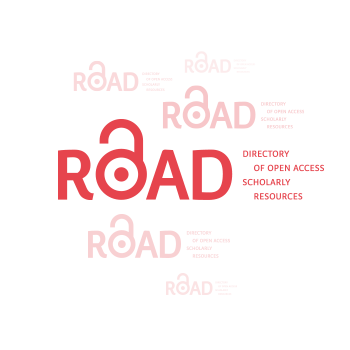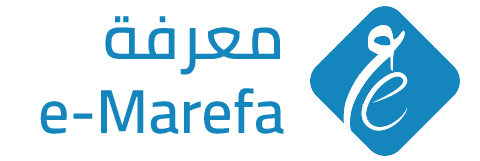تعزيز العقول المرنة: أثر الأسئلة السابرة في تحسين التفكير المتشعب في الجغرافيا
DOI:
https://doi.org/10.59994/pau.2024.2.45الكلمات المفتاحية:
التفكير المتشعب، الأسئلة السابرة، تعليم الجغرافيا، مهارات القرن الحادي والعشرينالملخص
تُعَدّ تنمية قدرات التفكير المُتشعب لدى الطلاب ضرورة تربوية مهمة لتعزيز مهارات القرن الحادي والعشرين. ويُعَدّ تعليم الجغرافيا منصة ممتازة لدمج أساليب التفكير المُتشعب، حيث يتم دراسة النظم البشرية والبيئية المترابطة من خلال رُؤًى مكانية وثقافية متنوعة. تم تقييم فعالية دمج تدخلات الأسئلة السابرة المنظمة لتعزيز التفكير المُتشعب في تعليم الجغرافيا على مستوى المرحلة الثانوية. ومن خلال التصميم التجريبي، شارك في الدراسة (60) طالبًا تم تقسيمهم إلى مجموعة تجريبية تلقت تدريبًا على الأسئلة السابرة على مدار تسع جلسات، ومجموعة ضابطة تلقت تعليمًا جغرافيًا تقليديًا. أظهرت المجموعة التجريبية درجات تفكير مُتشعب أعلى بشكل دال إحصائيًا في جميع المكونات مقارنةً بالمجموعة الضابطة في الاختبار البعدي. واستمرت هذه التحسينات في الاختبار التتبعي، مما يؤكد الطبيعة المستدامة لتأثيرات تدخل الأسئلة السابرة. تُثبت النتائج صلاحية فنيات الأسئلة السابرة المنظمة كنهج تربوي واعد لتعزيز قدرات التفكير المرن والإبداعي وحل المشكلات الابتكارية في الجغرافيا. تُسهم هذه الدراسة بإطار تعليمي للتفكير المتشعب قائم على أدلة تجريبية تُعزّز مهارات الطلاب كمواطنين عالميين ملتزمين قادرين على التعامل مع تعقيدات عالمنا المترابط. تقود هذه الدراسة إطارًا تعليميًا قائمًا على أساس تجريبي لتنمية مهارات التفكير المُتشعب بشكلٍ هادف من خلال الأسئلة السابرة المنظمة في تعليم الجغرافيا. وتُسهم النتائج في الخطاب الأكاديمي حول الاستراتيجيات القائمة على الأدلة لتعزيز الكفاءات الأساسية للقرن الحادي والعشرين عبر المناهج الدراسية.
التنزيلات
المراجع
Abu Raya, M., Ogunyemi, A., & Rankin, K. (2023). The neurobiology of openness as a personality trait. Frontiers in Neurology, 14, Article 1235345. https://doi.org/10.3389/fneur.2023.1235345
Acar, S., & Runco, M. (2012). Creative abilities: Divergent thinking. In M. Mumford (Ed.), Handbook of organizational creativity (pp. 115-139). Academic Press. https://doi.org/10.1016/B978-0-12-374714-3.00006-9
Bicer, A., Lee, Y., Capraro, R., Capraro, M. M., Barroso, L., & Rugh, M. (2019, October 16-19). Examining the effects of STEM PBL on students’ divergent thinking attitudes related to creative problem solving [paper presentation]. In 2019 IEEE Frontiers in Education Conference (FIE) (pp. 1-6). IEEE. https://doi.org/10.1109/FIE43999.2019.9028431
Buranova, M., & Rakhmonova, G. (2024, April). Improving students' ability to think critically and analytically. In Conference Proceedings: Fostering Your Research Spirit (pp. 72-74). https://doi.org/10.2024/gw3fzf27
Cummins, J. (2009). Transformative multiliteracies pedagogy: School-based strategies for closing the achievement gap. Multiple voices for ethnically diverse exceptional learners, 11(2), 38-56. https://doi.org/10.56829/muvo.11.2.2420352213232u47
Duckor, B., & Holmberg, C. (2019). Exploring how to model formative assessment trajectories of posing‐pausing‐probing practices: Toward a teacher learning progressions framework for the study of novice teachers. Journal of Educational Measurement, 56(4), 836-890. https://doi.org/10.1111/jedm.12239
Finke, R. A., Ward, T. B., & Smith, S. M. (1992). Creative cognition: Theory, research, and applications. MIT Press.
Fletcher, A., & Benveniste, M. (2022). A new method for training creativity: narrative as an alternative to divergent thinking. Annals of the New York Academy of Sciences, 1512(1), 29-45. https://doi.org/10.1111/nyas.14763
Gardenia, N., Herman, T., Rahadyan, A., & Dahlan, T. (2020, July). Application of problem-based learning approaches with probing-prompting techniques to improve students' adaptive reasoning capabilities. In Proceedings of the 7th Mathematics, Science, and Computer Science Education International Seminar, Bandung, West Java, Indonesia (p. 138). European Alliance for Innovation. https://doi.org/10.4108/eai.12-10-2019.2296525
Guilford, J. (1968). Intelligence Has Three Facets: There are numerous intellectual abilities, but they fall neatly into a rational system. Science, 160(3828), 615-620. https://doi.org/10.1126/science.160.3828.615
Hua, Y., & Yang, Y. (2024). Early childhood preservice teachers’ beliefs of creativity, creative individuals and creative environment: Perspectives from China. Thinking Skills and Creativity, 51, Article 101441. https://doi.org/10.1016/j.tsc.2023.101441
Jacobson, M., & Spiro, R. (1995). Hypertext learning environments, cognitive flexibility, and the transfer of complex knowledge: An empirical investigation. Journal of educational computing research, 12(4), 301-333. https://doi.org/10.2190/4T1B-HBP0-3F7E-J4PN
Kalargiros, E., & Manning, M. (2015). Divergent thinking and brainstorming in perspective: Implications for organization change and innovation. In A. Shani, & D. Noumair (Eds.), Research in organizational change and development (Vol. 23, pp. 293-327). Emerald Group Publishing Limited. https://doi.org/10.1108/S0897-301620150000023007
King, A. (2007). Scripting collaborative learning processes: A cognitive perspective. In F. Fischer, I. Kollar, H. Mandl, J. Haake (Eds), Scripting computer-supported collaborative learning: Cognitive, computational and educational perspectives (pp. 13-37). Springer US. https://doi.org/10.1007/978-0-387-36949-5_2
Koivisto, M., & Grassini, S. (2023). Best humans still outperform artificial intelligence in a creative divergent thinking task. Scientific reports, 13(1), Article 13601. https://doi.org/10.1038/s41598-023-40858-3
Krathwohl, D. (2002). A revision of Bloom's taxonomy: An overview. Theory into practice, 41(4), 212-218. https://doi.org/10.1207/s15430421tip4104_2
Lai, C. K., Haim, E., Aschauer, W., Haim, K., & Beaty, R. (2024). Fostering creativity in science education reshapes semantic memory. University Park. Retrieved from https://osf.io/cmrhv/download
Lenzner, T., & Neuert, C. (2017). Pretesting survey questions via web probing–Does it produce similar results to face-to-face cognitive interviewing? Survey Practice, 10(4), 1-13. https://doi.org/10.29115/SP-2017-0020
Lucas, B., & Spencer, E. (2017). Teaching Creative Thinking: Developing learners who generate ideas and can think critically (Pedagogy for a Changing World series). Crown House Publishing Ltd.
Mansour, N. (2024). Students’ and facilitators’ experiences with synchronous and asynchronous online dialogic discussions and e-facilitation in understanding the Nature of Science. Education and Information Technologies, 1-33. https://doi.org/10.1007/s10639-024-12473-w
Metwaly, S., Fernández-Castilla, B., Kyndt, E., Van den Noortgate, W., & Barbot, B. (2021). Does the fourth-grade slump in creativity actually exist? A meta-analysis of the development of divergent thinking in school-age children and adolescents. Educational Psychology Review, 33, 275-298. https://doi.org/10.1007/s10648-020-09547-9
National Council for the Social Studies (NCSS). (2016). A vision of powerful teaching and learning in the social studies. Social Education 80(3), 180–182. Retrieved from https://www.socialstudies.org/
Neuert, C., & Lenzner, T. (2021). Effects of the number of open-ended probing questions on response quality in cognitive online pretests. Social Science Computer Review, 39(3), 456-468. https://doi.org/10.1177/0894439319866397
Noroozi, O., Weinberger, A., Biemans, H., Mulder, M., & Chizari, M. (2013). Facilitating argumentative knowledge construction through a transactive discussion script in CSCL. Computers & Education, 61, 59-76. https://doi.org/10.1016/j.compedu.2012.08.013
Oliveira, A. (2010). Improving teacher questioning in science inquiry discussions through professional development. Journal of Research in Science Teaching: The Official Journal of the National Association for Research in Science Teaching, 47(4), 422-453. https://doi.org/10.1002/tea.20345
Ozuem, W., & Lancaster, G. (2015). Questioning: A path to student learning experience. Education+ Training, 57(5), 474-491. https://doi.org/10.1108/ET-04-2014-0039
Partnership for 21st Century Skills. (2007). The intellectual and policy foundations of the 21st century skills framework. Author.
Partnership for 21st Century Skills. (2009). Framework for 21st century learning. Author.
Paul, R., & Elder, L. (2007). Critical thinking: The art of Socratic questioning. Journal of developmental education, 31(1), 36-37.
Quick, K., & Sandfort, J. (2014). Learning to facilitate deliberation: practicing the art of hosting. Critical Policy Studies, 8(3), 300-322. https://doi.org/10.1080/19460171.2014.912959
Rahayuningsih, S., Mardliyah, A. A., & Rijanto, A. (2023). Peningkatan Kompetensi Guru Dan Membangun Budaya Belajar Berkelanjutan Melalui Pembentukan Komunitas Belajar. AMMA: Jurnal Pengabdian Masyarakat, 2(8: September), 934-940.
Roberts, J., Headleand, C., & Ritsos, P. (2017). Thoughts, Ideas, Problems and Solutions. In J. Roberts, C. Headleand, P. Ritsos (Eds.), Five Design-Sheets: Creative Design and Sketching for Computing and Visualisation (pp. 43-84). Springer. https://doi.org/10.1007/978-3-319-55627-7_3
Runco, M. (2010). Divergent thinking, creativity, and ideation. In J. Kaufman & R. Sternberg (Eds.), The Cambridge handbook of creativity (pp. 413–446). Cambridge University Press. https://doi.org/10.1017/CBO9780511763205.026
Ryan, R., & Deci, E. (2000). Self-determination theory and the facilitation of intrinsic motivation, social development, and well-being. American Psychologist, 55(1), 68–78. https://doi.org/10.1037/0003-066X.55.1.68
Singer, J., Marx, R., Krajcik, J., & Clay Chambers, J. (2000). Constructing extended inquiry projects: Curriculum materials for science education reform. Educational Psychologist, 35(3), 165-178. https://doi.org/10.1207/S15326985EP3503_3
Spiro, R., Feltovich, P., Coulson, R. L., Jacobson, M., Durgunoglu, A., Ravlin, S., & Jehng, J. (1992). Knowledge Acquisition for Application: Cognitive Flexibility and Transfer of Training in IllI-Structured Domains. Retrieved from https://apps.dtic.mil/sti/citations/tr/ADA250147
Sun, M., Wang, M., & Wegerif, R. (2020). Effects of divergent thinking training on students’ scientific creativity: The impact of individual creative potential and domain knowledge. Thinking Skills and Creativity, 37, Article 100682. https://doi.org/10.1016/j.tsc.2020.100682
Vygotsky, L., & Cole, M. (1978). Mind in society: Development of higher psychological processes. Harvard university press.
Vynohradova, V., Bila, I., Kostyuchenko, O., Oborska, S., & Dykhnych, L. (2021). Creativity, Readiness for Changes and Tolerance for Ambiguity. BRAIN. Broad Research in Artificial Intelligence and Neuroscience, 12(3), 44-63. https://doi.org/10.18662/brain/12.3/219
Welch, S. (2022). Critical Inquiry: Creative Movement and Embodied Cognition. In Choreography as Embodied Critical Inquiry: Embodied Cognition and Creative Movement (pp. 35-55). Springer International Publishing. https://doi.org/10.1007/978-3-030-93495-8_2
Wigert, B. (2013). The influence of divergent and convergent problem construction processes on creative problem solving (Publication No. 3604561) [Doctoral dissertation, University of Nebraska at Omaha].
Xia, T., Kang, M., Chen, M., Ouyang, J., & Hu, F. (2021). Design training and creativity: Students develop stronger divergent but not convergent thinking. Frontiers in psychology, 12, Article 695002. https://doi.org/10.3389/fpsyg.2021.695002
Yelland, N., Cope, B., & Kalantzis, M. (2008). Learning by design: Creating pedagogical frameworks for knowledge building in the twenty‐first century. Asia‐Pacific Journal of Teacher Education, 36(3), 197-213. https://doi.org/10.1080/13598660802232597
التنزيلات
منشور
كيفية الاقتباس
إصدار
القسم
الرخصة
الحقوق الفكرية (c) 2024 مجلة جامعة فلسطين الأهلية للبحوث والدراسات

هذا العمل مرخص بموجب Creative Commons Attribution 4.0 International License.
مجلة جامعة فلسطين الاهلية للبحوث والدراسات تعتمد رخصة نَسب المُصنَّف 4.0 دولي (CC BY 4.0)











